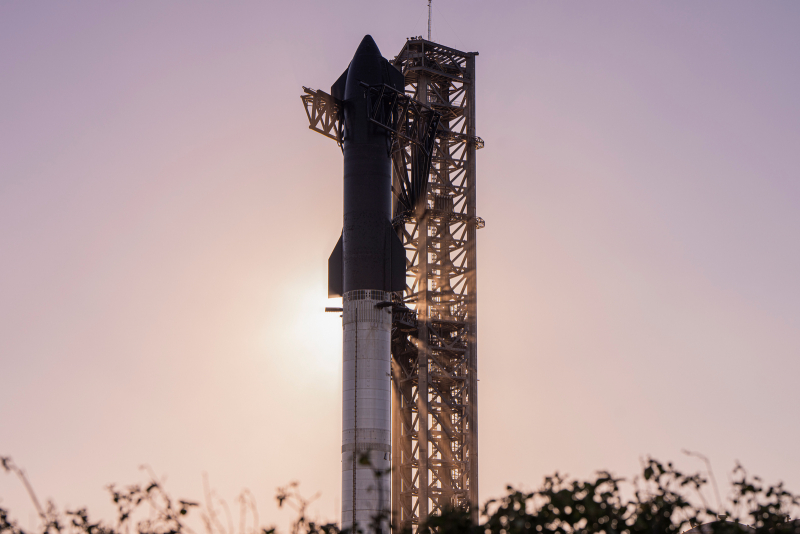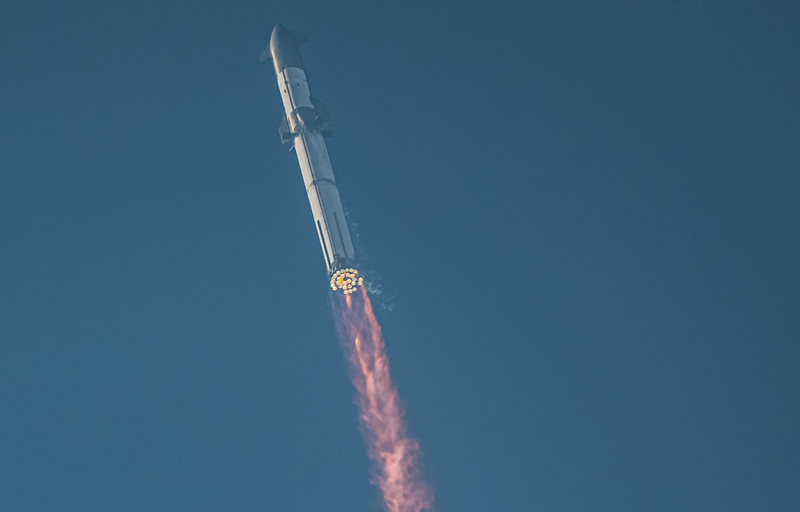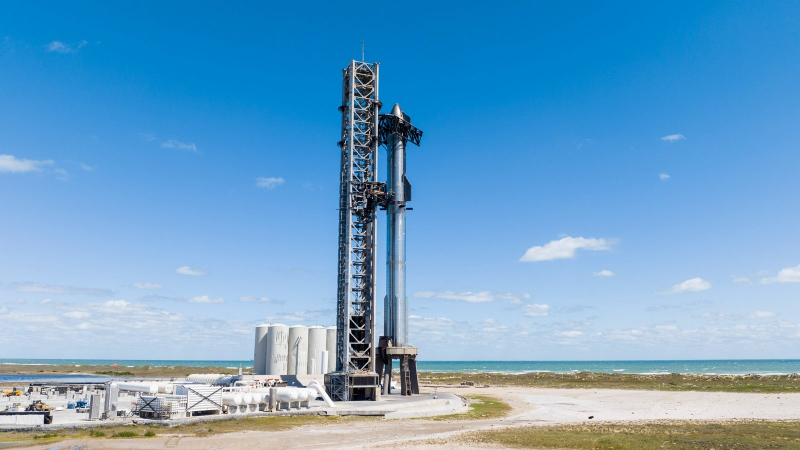Today, after many months of preparation and waiting for regulatory approval, SpaceX will once again launch its huge Starship rocket system into orbit. The window for launching the 120-meter rocket, the most powerful ever created by mankind, will open on November 18 at 15:00 Kyiv time – it will be 8 am at the SpaceX Starbase launch pad in Boca Chica, Texas.

The Starship rocket consists of a huge accelerator (first stage) called Super Heavy and a spacecraft (upper stage) known as Starship. The former has 33 Raptor rocket engines, while the ship has six. The current test flight will involve the 25th prototype of the ship and the ninth accelerator.
If all goes according to plan, the two Starship stages will separate 2 minutes and 41 seconds after launch. Over the next few minutes, Super Heavy will perform several engine cycles and land in the Gulf of Mexico about seven minutes after launch. Starship, meanwhile, will continue to move up and east, reaching a maximum speed close to orbital speed (27,400 km/h). However, the spacecraft will not make a full orbit around the Earth: about 90 minutes after launch, it will descend into the Pacific Ocean near the Hawaiian Islands, where it will be caught for study.
Both Starship stages are reusable, but today’s flight will be the only one for Ship 25 and Booster 9. SpaceX’s flight description shows that both stages descend directly into the sea, not onto an unmanned ship, as the first stages of Falcon 9 and Falcon Heavy rockets usually do.

The first attempt to launch the Starship to orbital altitude in April of this year ended in failure. The rocket climbed to an altitude of 38 km, after which it began to spin and fall uncontrollably, and at an altitude of about 30 km, it exploded. The emergency situation occurred when the second stage was supposed to separate from the first, but the system malfunctioned.
For safety reasons, the missile had to be destroyed in the air, which happened with a significant delay, and this could have led to tragic consequences. According to SpaceX, the damage to the accelerator that caused the crash damaged communication with the rocket’s main computer, and this prevented the charges from being triggered by a signal from the ground. However, after some time, the rocket underwent a “rapid unplanned disassembly,” as SpaceX itself stated.
Also, during the launch, the rocket damaged the launch table, the concrete fragments of which, in turn, scattered over a huge area and damaged the equipment of the spaceport and some private property in the nearby village. The scale of the destruction forced the Federal Aviation Administration (FAA) to impose dozens of requirements on the company, without which a license to re-launch could not be issued in any case. The license also required approval from environmental authorities.

The data collected during the first launch helped us to better prepare for the new launch. The company not only complied with regulatory requirements but also made a number of significant changes to the rocket. For example, a “hot scheme” will be used to separate rocket stages. The Starship will start the engines even before the moment of disconnection from the Super Heavy accelerator, whereas during the first launch, they were separated first, and only then did the Starship start the engines. In addition, a new electronic thrust vector control (TVC) system for the Raptor engines in the accelerator was put into operation. Finally, the starting table received a steel platform and a water flame extinguishing system.
Starship is a critical component for the future of SpaceX. This rocket and ship are planned to be used for a variety of missions, from launching new generation Starlink Internet satellites into orbit to returning people to the Moon and, in the future, delivering astronauts to Mars. The Starship will be able to launch up to 150 tons of cargo into Earth orbit in reusable mode and up to 250 tons in single mode – Falcon 9 can currently launch up to 17.4 tons. The new huge rocket will also be able to deliver up to 150 tons of cargo to the Moon and Mars.
NASA has big plans for Starship as part of the Artemis lunar program: huge ships will be used to transport crews from low Earth orbit to the Gateway lunar orbital station and between the station and the lunar surface. SpaceX will develop the HLS Starship lander, which will safely deliver two American astronauts to the lunar surface and return them to lunar orbit in a week.
Elon Musk has said that the giant Starship spacecraft has a “decent chance” of entering Earth orbit during its second test launch. We’ll find out in a few hours if we succeed in the second attempt!

